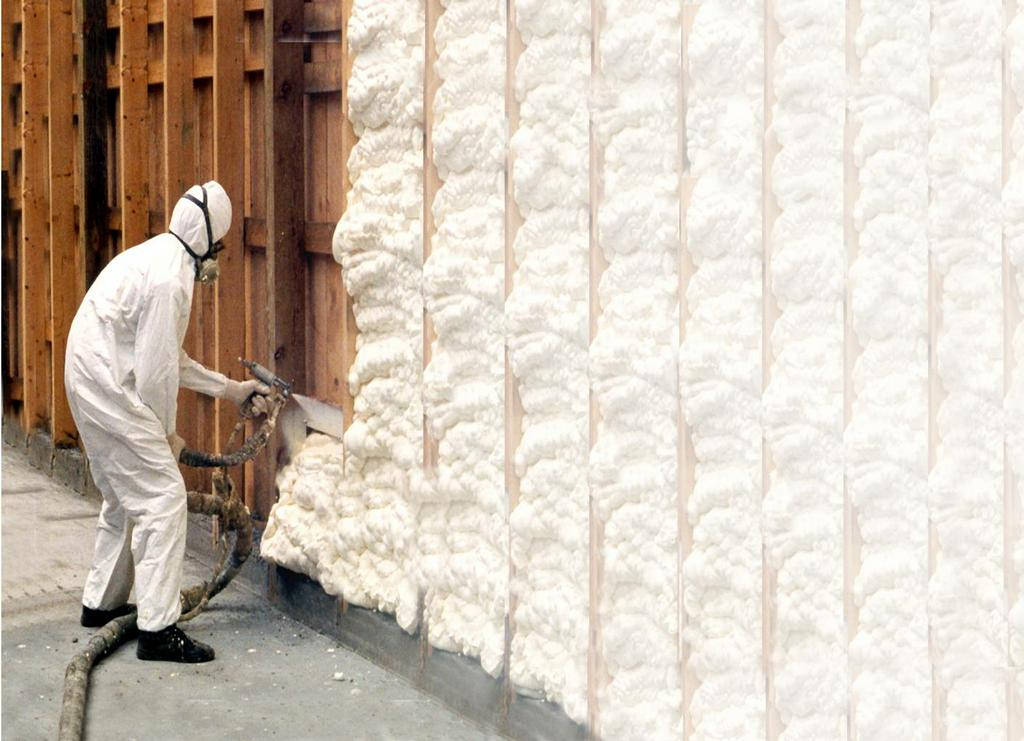Typical Misconceptions Concerning Spray Foam: Debunking the Misconceptions
Typical Misconceptions Concerning Spray Foam: Debunking the Misconceptions
Blog Article
Exactly How Spray Foam Can Improve Power Effectiveness in Any Type Of Structure
Spray foam insulation has become an essential remedy for improving energy effectiveness throughout numerous structure kinds. By creating an airtight seal that decreases air leakage, it successfully manages indoor environments while dramatically decreasing heating & cooling expenses. Its impressive R-value and moisture-resistant homes add to long-lasting power savings and improved building long life. As homeowner increasingly look for lasting services, the effects of spray foam insulation prolong past simple utility financial savings. The full scope of its benefits, nevertheless, warrants a more detailed exam of exactly how it can transform energy management approaches in both commercial and property settings.
Understanding Spray Foam Insulation
Spray foam insulation is significantly identified for its exceptional thermal performance and adaptability in numerous applications. Composed mostly of polyurethane, this insulation product is applied as a fluid that broadens upon get in touch with, filling gaps and creating a smooth barrier. This special building permits spray foam to conform to irregular surface areas, making it an excellent choice for both business and household structures.

Application of spray foam insulation is normally done by skilled specialists using specific equipment, guaranteeing optimum performance and safety - Spray Foam. The treating process is quick, permitting fast installation and very little disruption. Therefore, spray foam insulation is increasingly being utilized in new construction and retrofitting jobs because of its capacity to boost structural integrity while improving overall energy effectiveness in buildings
Benefits of Energy Efficiency
Power performance plays a crucial function in minimizing operational costs and minimizing ecological effect across various sectors. By maximizing power use, companies and property owners can achieve significant financial savings on energy expenses, which directly improves economic efficiency. Efficient power usage implies much less dependence on fossil fuels, thereby adding to a decrease in greenhouse gas discharges and promoting a more lasting atmosphere.
Additionally, energy-efficient buildings often experience increased home values. As power expenses rise and sustainability comes to be a concern for customers, buildings with improved power effectiveness features are extra attractive on the marketplace. This pattern urges financial investment in energy-saving innovations, which can better drive advancement and economic development.
Along with monetary and ecological benefits, power efficiency can additionally improve the general convenience and health of interior spaces. Correct insulation and efficient cooling and heating systems help maintain regular temperature levels, decreasing drafts and moisture degrees, which subsequently can cause much better indoor air quality.
Ultimately, the benefits of energy efficiency expand beyond prompt savings, fostering a resilient economic climate, promoting environmental stewardship, and boosting the lifestyle for owners in any building.
How Spray Foam Functions
Generally applied as a liquid, spray foam broadens quickly upon call with surface areas, developing a strong barrier that properly seals fractures and spaces. This distinct property is due to its chemical composition, primarily including isocyanates and polyols, which react when blended to create a foam that loads gaps and sticks to different materials, including steel, concrete, and wood.
As soon as used, the foam broadens to a number of times its original volume, ensuring a limited seal that protects against air leak. This process significantly reduces thermal linking, which happens when warm transfers through materials, resulting in energy loss. The foam's high R-value, a measure of thermal resistance, contributes to improved insulation by reducing heat transfer between the interior and outside settings.
Furthermore, spray foam is resistant to dampness and insects, even more improving its effectiveness in preserving power efficiency. Its application can be tailored to various recommended you read areas, consisting of attics, wall surfaces, and crawl rooms, optimizing insulation across a building. Spray Foam. Overall, the ingenious layout and application approach of spray foam make it a reliable service for improving power efficiency in any kind of structure, bring about decreased power costs and an extra sustainable developed setting

Applications in Numerous Buildings
Various applications of spray foam insulation can be located throughout various building kinds, boosting energy effectiveness and convenience. In household homes, spray foam is typically made use of in attic rooms and walls to develop a smooth obstacle against air leaks, substantially reducing heating and cooling demands. This application is especially helpful in older homes, where traditional insulation may be insufficient.
In industrial structures, spray foam insulation is put on roof covering systems and exterior wall surfaces, which helps to improve thermal performance and safeguard against moisture invasion. Its lightweight nature makes it an optimal selection for retrofitting existing structures without adding substantial weight. Additionally, spray foam can be used in industrial setups to shield pipelines and tank, preserving temperature level control for delicate materials.
Institutional buildings, such as health centers and colleges, gain from spray foam insulation by making certain a regular interior environment that supports resident comfort and health. The adaptability of spray foam permits it to adapt to numerous structure shapes and dimensions, making it a recommended choice for architects and builders looking for reliable insulation services. In general, spray foam insulation functions as a crucial part in accomplishing energy-efficient buildings throughout all sectors.
Long-Term Price Financial Savings
Spray foam insulation provides significant lasting expense savings for structure owners and owners by minimizing energy intake and reducing energy expenses. By providing a premium air seal, spray foam lessens the infiltration of outdoors air, thus boosting the thermal performance of a structure. This causes more effective home heating and cooling procedures, which can result in significant reductions this content in power costs with time.
In addition to prompt savings on energy bills, the longevity and long life of spray foam insulation contribute to its financial benefits. Unlike traditional insulation products, which may droop, clear up, or weaken, spray foam preserves its performance for decades, minimizing the requirement for constant substitutes or repair services. This longevity translates to lower upkeep prices and much less disturbance for residents.
In addition, buildings furnished with spray foam insulation often delight in a rise in home worth, making them extra attractive to possible customers or tenants. As energy effectiveness ends up being significantly prioritized, homes with efficient insulation options stand out on the market. Eventually, the combination of spray foam insulation not only improves comfort however likewise represents a critical investment that generates considerable economic benefits over the long term.
Final Thought
In verdict, spray foam insulation serves as a crucial part in boosting power efficiency across diverse building kinds. Its capability to create a smooth barrier versus air leak, combined with high R-values and moisture-resistant buildings, dramatically lowers power usage and linked costs. The application of spray this link foam not just adds to regular interior temperature levels but also enhances building value, underscoring its duty as a prudent financial investment for both domestic and commercial residential properties.
Spray foam insulation has emerged as a crucial service for enhancing power performance throughout different structure kinds. Spray Foam. As an outcome, spray foam insulation is progressively being used in new construction and retrofitting tasks due to its capability to enhance architectural honesty while enhancing total power performance in buildings
Overall, the ingenious layout and application method of spray foam make it an effective option for boosting power effectiveness in any type of structure, leading to reduced energy expenses and an extra sustainable constructed setting.
Various applications of spray foam insulation can be located throughout numerous structure kinds, enhancing power efficiency and convenience.In conclusion, spray foam insulation offers as a vital component in boosting power efficiency throughout varied structure kinds.
Report this page